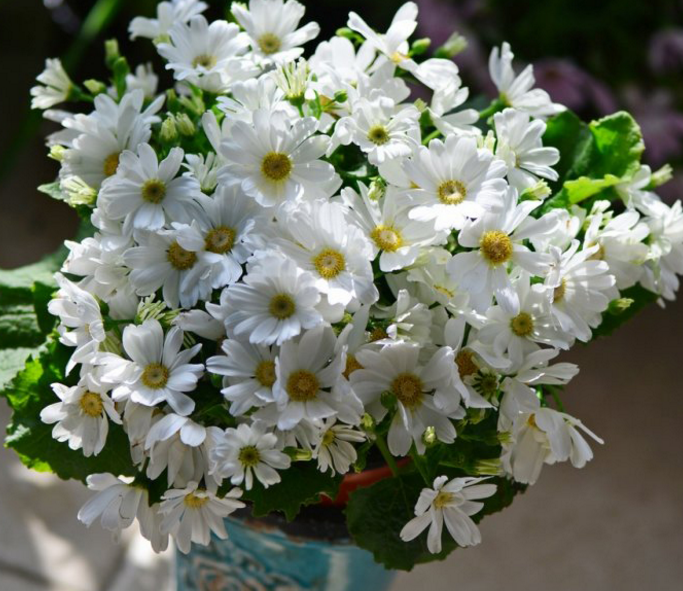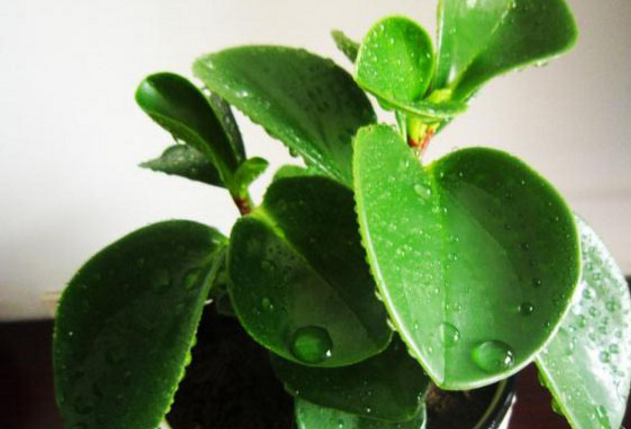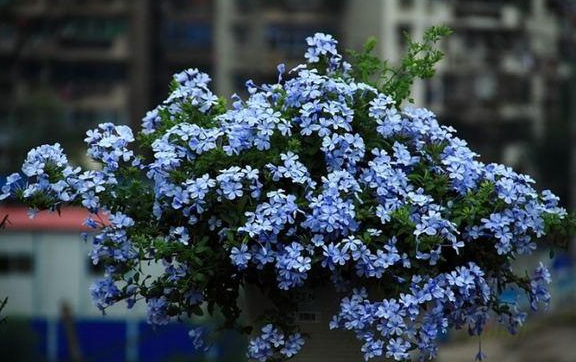Is the reason why the melon leaf chrysanthemum is dead can only be kept for one year?
Melon leaf chrysanthemum, this is a lot of people like breeding, the name is also relatively good, others say that this melon leaf chrysanthemum is easy to raise, as a result, they raised the melon leaf chrysanthemum to death, what is the reason why the melon leaf chrysanthemum died? Can you only keep melon and leaf chrysanthemum for one year?

The reason for the death of melon and leaf chrysanthemum:
Mistake one: failure to open the bag in time for ventilation.
Selling flowers in the flower market will cover a plastic bag on the outside, mainly to prevent the flower pole from being knocked off when moving, of course, it also has an aesthetic effect. This batch of melon and leaf chrysanthemum was bought by New Year's Day and put on the car after buying the flowers. I didn't deal with them. Anyway, I went home in two days. When I got home on the third day, when I took out the melon and leaf chrysanthemum, I found that it was not good, because it was stuffed in the bag and most of the leaves under it were moldy. In those days, the outdoor temperature was relatively low, and several pots of melon and leaf chrysanthemum already looked listless.
Melon leaf chrysanthemum just bought the picture, the flowers look good, but near the bottom of the leaves, or rotten or yellowing.
Error 2: the temperature is too low!
Looking at the muggy melon and leaf chrysanthemum, the first thing is to put them in the ventilated place outside the balcony immediately.
However, I ignored the temperature. It was too cold outside. As a result, when I went home the next night, I found that several pots of melon leaves and chrysanthemum stalks had softened and drooped.
Error 3: the temperature is suddenly cold and hot!
Looking at the flower head drooping melon and leaf chrysanthemum, I judged that it was frozen, so I put it at home that night. The temperature in the living room is usually 18-20 degrees at night.
Two pots are already OVER, and they can't get over it.
Error 4: overwatering.
Most of the time, it will be wrong again and again. When looking for the reason why the melon and leaf chrysanthemum is soft, we see that several pots are dry, so we water them and keep them moist.
Keep getting wet.
As a result, several more trees were OVER. It's too wet and rotten.
Can you only keep melon and leaf chrysanthemum for one year?
I'm not sure about that. As long as the melon leaf chrysanthemum blossoms, there is no doubt that it will die, and it can only be fed for 1 to 2 years.
This is the reason why the melon-leaf chrysanthemum is dead. This melon-leaf chrysanthemum really has a relatively short life span.
Can melon leaf chrysanthemum be kept for only one year? what are the colors of melon leaf chrysanthemum / except yellow
Melon and leaf chrysanthemum, a flower loved by flower friends recently, has a wide variety and rich colors, so it is very ornamental when raised indoors. In the process of breeding, many people say that melon-leaf chrysanthemum can only live for one year, but can it only be raised for one year? If not, how many years can the chrysanthemum grow? What are the colors of melon and leaf chrysanthemum? In this regard, it is up to the editor to solve everyone's doubts.
Can you only raise melon and leaf chrysanthemum for one year? can you raise it for 1-2 years?
In life, many flower friends die after they bloom, so everyone thinks that they can only be kept for one year, but can they only be kept for one year? In this regard, the editor can tell you that this is not the case, because the melon leaf chrysanthemum is a perennial herb, so it can be raised for many years. It's just that people often grow melon and leaf chrysanthemum for 1-2 years.
As a common ornamental flower, the breeding method of melon and leaf chrysanthemum is not difficult, and its breeding method is not difficult. Therefore, in order for melon-leaf chrysanthemum to bloom at home every year, we should master the breeding methods of melon-leaf chrysanthemum, especially sowing and reproduction, control the time, and also control the flowering period of melon-leaf chrysanthemum, as follows:
① sowed the melon and leaf chrysanthemum in late August of the previous year. After careful care, it will blossom in New Year's Day.
② sowed the melon and leaf chrysanthemum in late September of the previous year. After careful care, it will blossom in spring.
③ planted the melon and leaf chrysanthemum in December of the previous year. After careful care, it will blossom in International Labour Day.
④ will sow seeds around May. After careful care, the melon and leaf chrysanthemum will blossom in the Mid-Autumn Festival.
What are the colors of Chrysanthemum morifolium
Flower friends who are familiar with melon and leaf chrysanthemum should know that it is easy to cross, so there are many varieties and colors are extremely rich. As for the colors of melon and leaf chrysanthemum, according to the editor's inquiry, except yellow, there are all other colors, not only that, but also red and white complex colors! Next, let's go and enjoy the respective colors of melon and leaf chrysanthemum.
Which flowering plants are best to grow? Although the orchid green pineapple is easy to raise, it can only enjoy the leaves, and the appreciation is always poor. Today, Huahua recommends some family ornamental plants that are easy to maintain and beautiful to bloom. As long as there is a pot, it will immediately make your home shine. Which flowering plants are best to grow? First, rose florescence: the natural flowering period from August to April next year rose cultivation is very simple, it is best placed in the balcony balcony sunny, ventilated place, the blooming rose can also be cut off to do cut flowers, Valentine's Day do not have to buy flowers for your girlfriend! Maintenance points: 1, every day to ensure that there are 6 hours of light time, otherwise the rose is very easy to grow leaves without flowering. 2. Pay attention to watering the rose. If it is not dry, it will be watered thoroughly. The rose flower is afraid of water. There must be no stagnant water in the flowerpot. The water is too big to rot the root. Winter dormancy period must be less watering, to maintain a semi-dry state. 3. Rose flowers like fertilizer, so it is necessary to apply fertilizer frequently. During the growing period, irrigate thin liquid fertilizer every ten days or so. Do not overuse it, or burn seedlings and prohibit fertilization during winter dormancy. Which flowering plants are best to grow? Second, gardenia florescence: from March to July, "gardenia bloom, gardenia bloom, like crystal spray blooming in my heart", white gardenia, fresh and elegant, like a teenager's first love, rich fragrance, like an unforgettable memory. Maintenance points: 1, watering Rain Water or Amoy rice water is better, watering ferrous sulfate every two weeks, can change the alkaline soil, gardenia does not grow well under alkaline conditions. 2. After flowering after August, only water can be watered. It can be moved indoors in October and the water can be strictly controlled in winter. From May to July every year, heart-picking and topping can be carried out to promote the germination of lateral branches. 3. Gardenia can be propagated by cutting, preferably in spring and autumn. Cut the branches that have grown for two or three years, cut them into about 10 centimeters, remove the lower leaves, cut them into vermiculite or sandy soil, keep them moist, and take root in about a month. Which flowering plants are best to grow? Third, melon leaf chrysanthemum florescence: from January to April, the flower language of melon leaf chrysanthemum is happy, the whole family is happy, raise a pot indoors, the mood will also become super good, you can also give it to relatives and friends, all the blessings are in the flower. Maintenance points: 1, melon leaf chrysanthemum generally do annual cultivation, need to be placed in a cool and ventilated place, afraid of exposure, summer, but also need to take water spray cooling. 2. During the growth period, applying nitrogen, phosphorus and potassium compound fertilizer or thin cake fertilizer every two weeks can promote the growth of flowers. Be careful not to apply too much nitrogen fertilizer and control the amount of water before flowering, otherwise it will make the leaves grow too large and affect the ornamental. Which flowering plants are best to grow? Fourth, peony florescence: in May, the peony, which has been known as the king of flowers, has bright colors, magnificent and high ornamental value. Maintenance points: 1. If you want to let the peony blossom, you must go through low temperature treatment for two or three months. Many flower friends' peony does not blossom, mostly because it has been kept indoors without low temperature treatment. However, if left outdoors, the cold areas of the north had better take appropriate cold prevention treatment. 2. Pruning withered branches and weak branches in time and concentrating nutrition can make peony flowers bright and colorful. 3. Rotten organic fertilizer can be applied in autumn every year, and chemical fertilizer can be used in spring and summer combined with watering to make the plant grow healthily. Which flowering plants are best to grow? Fifth, blue snow florescence: July-September blue snowflakes bloom in summer, light blue flowers, bring a trace of coolness to the hot summer, embellished in the living room, balcony, branches dangling, not to mention how beautiful. Maintenance points: 1. Blue snowflakes should be topdressing all-element compound fertilizer at least once a week during the growing season. 2. Usually, the surface of the medium should be kept dry and watered thoroughly. 3. Keeping high temperature and sufficient light can promote the branching of blue snowflakes. Which flowering plants are best to grow? Sixth, crab claw orchid florescence: October to February crab claw orchid in full bloom in winter, also known as Christmas cactus, plant type hanging, placed in the windowsill, living room, very beautiful. Maintenance points: 1, crab claw orchid has few requirements for water, basin soil avoid stagnant water, easy to lead to root rot, the growing season to keep the soil moist. 2. Change the basin every other year, preferably in March or April of each year, preferably in loose and fertile slightly acidic soil. 3. Crab claw orchid fertilization had better choose self-retting organic fertilizer, should not use chemical fertilizer, excessive fertilizer and water can easily lead to plant death.
- Prev

What is the effect of bean green? what if the leaves turn yellow?
Douban green prefers a warm and humid semi-overcast environment. The suitable temperature for growth is about 25 ℃, and the lowest is not less than 10 ℃. It is not resistant to high temperature, requires high air humidity and avoids direct sunlight. There is nothing better than to put a basin on your desk. So how much knowledge do you know about Douban Green? if you don't know, come and have a look.
- Next

How long is the florescence of blue snowflakes?
Blue snowflake, this kind of flower is super like by many people, this blue snowflake blossoms much better, it is super good-looking, what is the breeding method of this blue snowflake? How long is the flowering period of blue snowflakes: blue snowflakes, with emerald and green leaves, and the purest blue petals like the sky, fresh and elegant
Related
- Fuxing push coffee new agricultural production and marketing class: lack of small-scale processing plants
- Jujube rice field leisure farm deep ploughing Yilan for five years to create a space for organic food and play
- Nongyu Farm-A trial of organic papaya for brave women with advanced technology
- Four points for attention in the prevention and control of diseases and insect pests of edible fungi
- How to add nutrient solution to Edible Fungi
- Is there any good way to control edible fungus mites?
- Open Inoculation Technology of Edible Fungi
- Is there any clever way to use fertilizer for edible fungus in winter?
- What agents are used to kill the pathogens of edible fungi in the mushroom shed?
- Rapid drying of Edible Fungi

